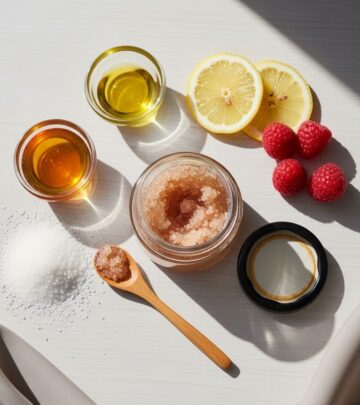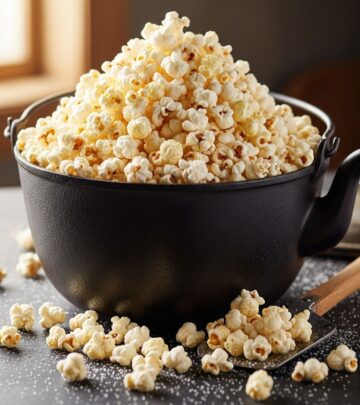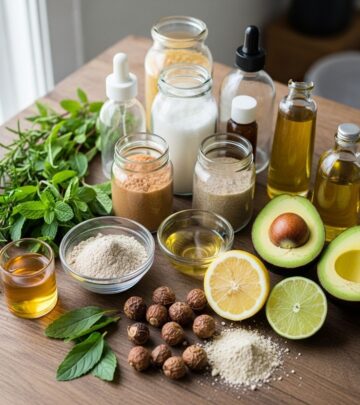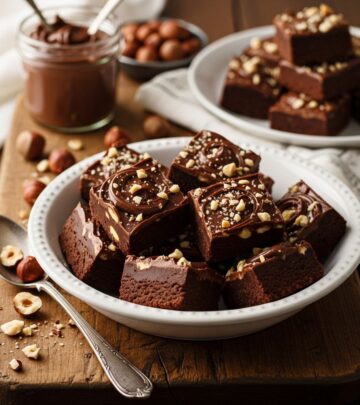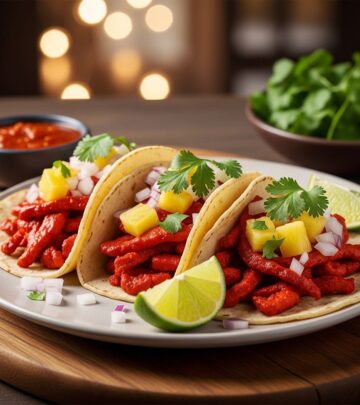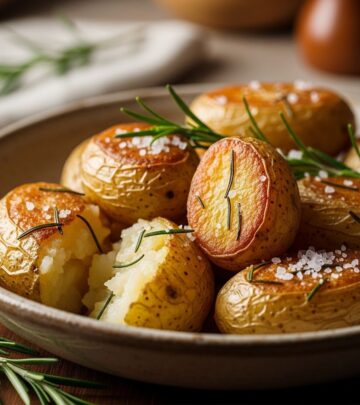Classic Tuna Salad: A Simple and Satisfying Staple
Bright herbs and crisp veggies combine in a protein-packed dish that’s endlessly adaptable.
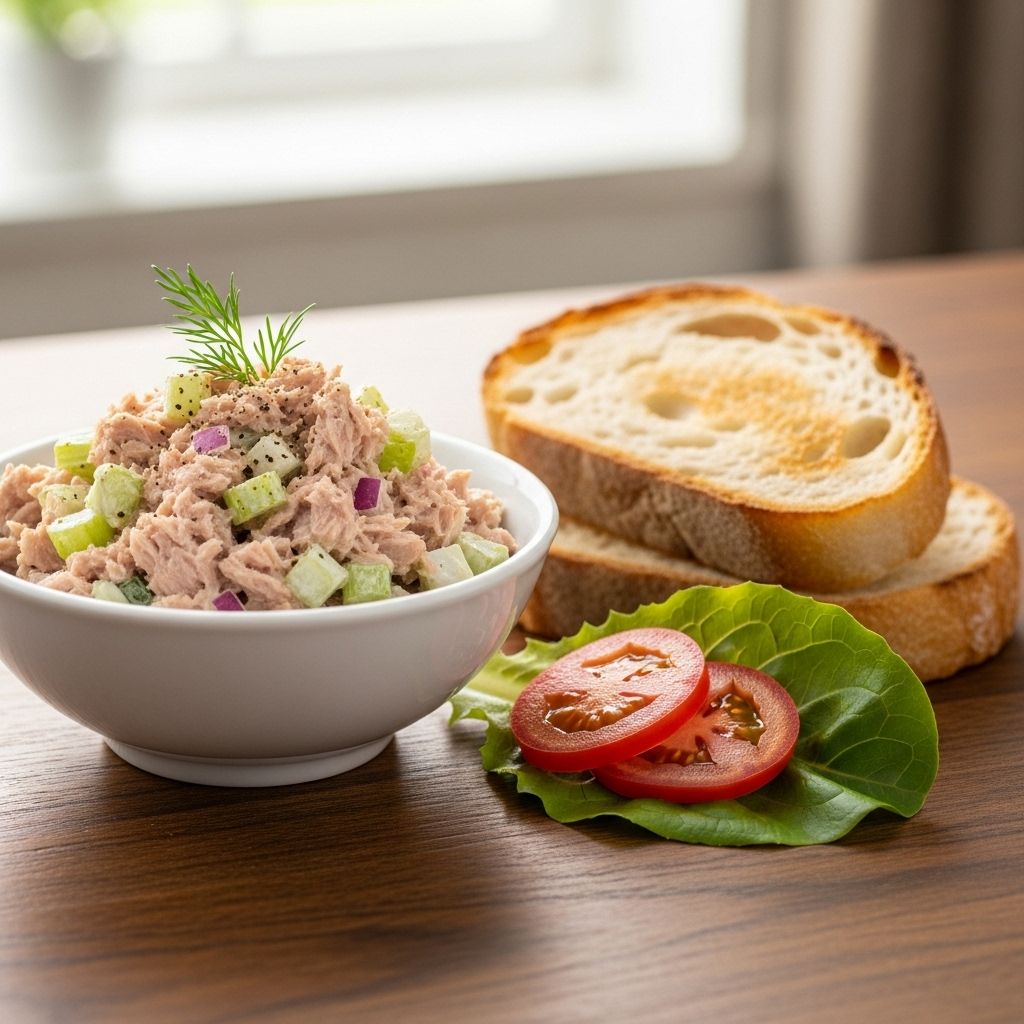
Image: HearthJunction Design Team
Tuna salad is a beloved classic for its remarkable balance of flavors, creamy consistency, and versatility. Whether piled into a sandwich, scooped onto greens, or served with crackers, this recipe demonstrates that comfort food can be both delicious and refreshingly straightforward.
Why Tuna Salad Remains a Favorite
Tuna salad has long held a place in kitchens around the world for good reason. It’s easy to make, requires minimal ingredients, and packs both protein and flavor into every bite. Its creamy, tangy, and slightly herby profile makes it endlessly versatile while retaining strong nostalgia. Whether made as a quick lunch or in advance for meal prep, it never disappoints.
How To Make Tuna Salad
Making the perfect tuna salad comes down to the harmony of a few well-chosen ingredients, the right method, and thoughtful seasoning. The following sections break down every step for achieving the most delicious results.
Ingredients
- Tuna: Select chunk white tuna packed in water, ideally unsalted. This variety provides a fresh, clean tuna flavor and a flaky texture that’s ideal for salad. The absence of added salt gives you greater control over seasoning.
- Mayonnaise: The backbone of the salad’s creamy texture, mayonnaise binds the ingredients and provides rich mouthfeel. Classic full-fat mayo is traditional, but feel free to substitute light versions if desired.
- Fresh Dill: Fresh dill elevates the flavor profile and adds subtle brightness. It is worth seeking out for its aromatic, herbal notes.
- Celery: Finely chopped celery brings essential crunch and a mild earthiness.
- Red Onion: Adds a sharp pop of flavor and a slight bite.
- Lemon Juice: Fresh lemon juice lifts the dish, balancing the creamy and savory elements with gentle acidity.
- Seasonings: Simple kosher salt and freshly ground black pepper round out the classic flavor.
Exact Ingredient List
- 2 (5-oz.) cans white tuna packed in water, drained
- 1/2 cup mayonnaise
- 2 tablespoons finely chopped fresh dill
- 1 teaspoon kosher salt
- 1/2 teaspoon freshly ground black pepper
- 1/2 cup finely chopped celery (about 1 large stalk)
- 1/4 cup finely chopped red onion
- 1 tablespoon freshly squeezed lemon juice
Step-by-Step Preparation
- Drain and Flake the Tuna: Place the drained tuna in a large mixing bowl. Use a fork to break up any larger chunks until the fish is finely flaked for a uniform mixture.
- Add Vegetables and Herbs: Add chopped celery, red onion, and fresh dill to the tuna. These components offer crunch and a burst of flavor throughout the salad.
- Mix in Mayo and Lemon Juice: Add mayonnaise and lemon juice. Stir gently until all ingredients are evenly coated and the texture is creamy but not heavy.
- Season: Sprinkle in kosher salt and black pepper. Stir again and taste. Adjust seasoning if needed.
- Chill (Optional): If time allows, cover and refrigerate the tuna salad for at least 30 minutes. This allows flavors to meld and the texture to set, making for even better results.
- Serve: Enjoy immediately or use as desired—sandwich filling, salad topping, or snack spread.
Tips for the Best Tuna Salad
- Use Quality Tuna: The success of this salad rests on the flavor of the tuna. Opt for a good-quality, unsalted, water-packed variety for freshness and versatility.
- Control the Mayo: Start with less mayonnaise and add more to achieve your preferred level of creaminess. The mixture should be moist and flavorful but not overly wet.
- Finely Chop Vegetables: Carefully dice the celery and onion to distribute their crunch without overpowering the texture.
- Balance with Acid: Lemon juice isn’t just for flavor—its acidity also brightens and helps balance out the creamy mayonnaise.
- Customize: Feel free to add or swap in fresh herbs (parsley, chives), a dash of Dijon mustard, or even a pinch of paprika for a different twist.
Serving Suggestions
Classic tuna salad is endlessly adaptable. Here are some favorite ways to serve it:
- Classic Sandwich: Pile onto toasted bread with crisp lettuce and fresh tomato.
- Lettuce Wraps: Scoop into large leaves of romaine or butter lettuce for a lighter, low-carb option.
- Salad Bowl: Serve atop a mixed greens salad with cucumber and avocado for a refreshing meal.
- Tuna Melt: Layer on bread with sliced cheese (Swiss or cheddar) and broil until warm and bubbling.
- With Crackers or Veggies: Pair with your favorite whole-grain crackers, cucumber rounds, or celery sticks as a snack.
- Stuffed in Veggies: Fill halved bell peppers, tomatoes, or even avocados.
Smart Variations to Try
While the classic version is deeply satisfying, tuna salad is easily customized for personal tastes or to suit what you have on hand:
- Dijon Kick: Stir in a tablespoon of Dijon or yellow mustard for a tangy, spicy note.
- Pickle Relish: Add a tablespoon of sweet or dill pickle relish for sweetness and crunch.
- Fresh Herbs: Swap dill for chives, parsley, or basil to change the flavor profile.
- Avocado: Replace some of the mayo with mashed avocado for a lighter, creamy, and heart-healthy twist.
- Heat: Incorporate diced pickled jalapeños or yellow chiles for spice.
- Eggs: Add a chopped hard-boiled egg for additional protein and richness.
Nutrition Information (Per Serving)
| Nutrient | Amount (Approx.) |
|---|---|
| Calories | 210 |
| Protein | 20g |
| Fat | 15g |
| Carbohydrates | 2g |
| Sodium | 430mg |
These values will vary based on specific ingredients and amounts used.
Storage and Make-Ahead Tips
- Refrigeration: Store the prepared tuna salad in an airtight container in the refrigerator for up to 3-4 days.
- Meal Prep: Tuna salad is an ideal make-ahead dish since flavor improves as it chills. Stir before serving for the best consistency.
- Avoid Freezing: Because of the mayonnaise base and fresh vegetables, freezing is not recommended and can negatively impact texture.
Frequently Asked Questions (FAQs)
Can I use tuna packed in oil instead of water?
Yes. Tuna packed in oil will yield a richer, more savory salad. If using oil-packed tuna, you may want to reduce the amount of mayonnaise slightly to account for the extra richness.
Is it necessary to chill the salad before serving?
While not strictly required, chilling for 30 minutes to an hour allows the flavors to develop and the texture to set. It’s especially recommended if you’re making the salad for later use.
What other vegetables can I add?
Diced bell peppers, shredded carrots, or chopped pickles add color and crunch. Just be sure to keep the total amount of add-ins moderate so the tuna remains the star.
Can I use Greek yogurt instead of mayonnaise?
Absolutely. Plain Greek yogurt can replace all or part of the mayonnaise for a lighter, tangier version.
How do I prevent watery tuna salad?
Drain the tuna thoroughly before mixing and use vegetables with minimal excess moisture. If the salad sits and releases moisture, simply stir before serving.
Expert Tips for Tuna Salad Success
- Taste and Adjust: Every can of tuna and batch of mayonnaise can vary—always taste before serving and fine-tune the seasoning if necessary.
- Use Canned or Pouch Tuna: Both work well. Ensure whichever you use is drained well and flaked for even mixing.
- Double Recipe for Meal Prep: This recipe scales up easily. Make a double batch to enjoy throughout the week.
- Pile on the Greens: For a balanced meal, serve tuna salad over a bed of mixed greens with your favorite vegetables.
Summary
Few dishes capture the spirit of quick, satisfying, and unfussy dining as well as tuna salad. By starting with the best possible ingredients and mastering the classic technique, you’ll have a go-to recipe ready for any lunch, picnic, or impromptu meal. Customizable and crave-worthy, it’s no wonder tuna salad remains a perennial staple.
References
- https://www.culinaryhill.com/classic-tuna-salad-sandwich/
- https://www.latinasquecomen.com/best-tuna-salad-recipe/
- https://www.youtube.com/watch?v=31hZbulFzI8
- https://www.delish.com/cooking/recipe-ideas/a43533456/tuna-salad-recipe/
- https://www.delish.com/cooking/recipe-ideas/a26146096/tuna-melt-recipe/
Read full bio of Shinta


